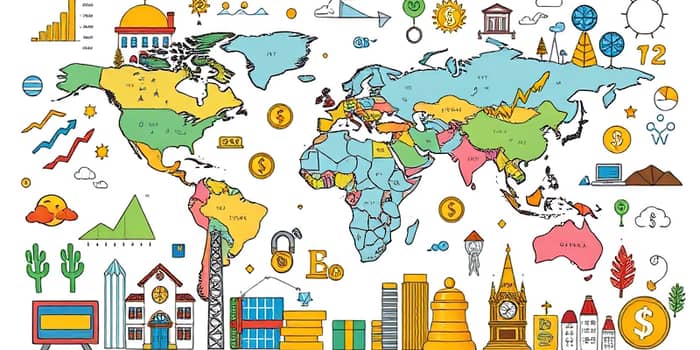
In an increasingly interconnected world, investors must look beyond domestic borders to build resilient portfolios that withstand volatility and capture growth. Global diversification isn’t just a buzzword—it’s a disciplined approach designed to spread risk, access new opportunities, and pursue long-term financial security.
By embracing a worldwide perspective, you can minimize risk and improve returns while harnessing unique regional strengths. Below, we explore definitions, models, strategies, and practical steps to craft a truly diversified portfolio.
Portfolio diversification involves allocating capital across different asset classes, sectors, and geographic regions to reduce exposure to any single source of risk. The core idea—“Don’t put all your eggs in one basket”—underscores how losses in one segment can be offset by gains elsewhere.
Effective diversification aims to create a smoother return profile over time by balancing high-growth, high-risk positions with stable, income-generating investments. It’s about striking the right mix to stay aligned with your goals and risk tolerance.
Focusing solely on domestic markets can leave investors vulnerable to localized downturns, political upheavals, and sector-specific slumps. International exposure reduces reliance on a single economy and allows you to access to different economic cycles that may outperform when home markets falter.
For instance, while the U.S. stock market often leads, it fails to top the charts roughly 40% of the time. Emerging economies, such as India or Vietnam, can deliver double-digit gains in years when developed markets stagnate. Geographic rotation of returns highlights the unpredictable nature of market leadership.
Below is a simplified overview of two sample allocation models—one for moderate risk and one for higher risk. Use these as starting points to tailor your own strategy.
In a moderate-risk portfolio, equities are spread across North America (20%), Europe (15%), and Asia (15%). Bonds include UK government and global corporate issues. Real estate is divided between commercial and residential funds, while alternatives feature gold ETFs and private equity.
To create a robust global portfolio, consider multiple dimensions of diversification:
Building a global portfolio doesn’t end with allocation—it requires ongoing care and attention. Successful investors follow disciplined routines to maintain the target risk profile and capture emergent trends:
Rebalancing: Review and adjust your allocations periodically, ideally annually or when market shifts move you off target. This practice locks in gains and curtails risk in overperforming segments.
Cost & Liquidity Management: Monitor fees, trading costs, and ensure adequate cash reserves for opportunistic moves. A balanced mix of liquid and illiquid assets safeguards flexibility.
Embracing international markets delivers several tangible advantages:
Risk Management: Geographic spread reduces overall volatility, as underperformance in one region may be offset by gains elsewhere.
Growth Opportunities: Regions like Southeast Asia and renewable energy hubs in Europe often outpace developed markets in key years.
Currency Flexibility: Holding assets and reserves in multiple currencies can act as a hedge against sudden FX fluctuations.
While compelling, global diversification brings its own set of pitfalls. Foreign investments may incur higher transaction fees, complex tax treatments, and regulatory barriers. Currency risk can amplify volatility, requiring thoughtful hedging strategies.
Avoid over-diversification, where a sprawling array of tiny positions dilutes potential gains and complicates management. Focus on meaningful allocations that align with your objectives.
The investment landscape evolves constantly. In 2025, digital assets like cryptocurrency and tokenized securities are gaining traction as uncorrelated portfolio components. Meanwhile, non-U.S. equities now represent a larger share of global GDP, elevating the importance of international allocations.
Venture capital and private equity structures are also more accessible to retail investors via specialized funds, offering growth potential beyond public markets.
By following these principles—rooted in long-term growth and stability—you can craft a portfolio that weathers uncertainty and seizes global opportunities. Start today by mapping your current holdings, identifying gaps, and building a plan that reflects both ambition and prudence.
Global diversification isn’t a one-time event; it’s a continuous journey of learning, adapting, and refining. Embrace the challenge, and let your investments span borders to unlock the full potential of the world’s markets.
References













